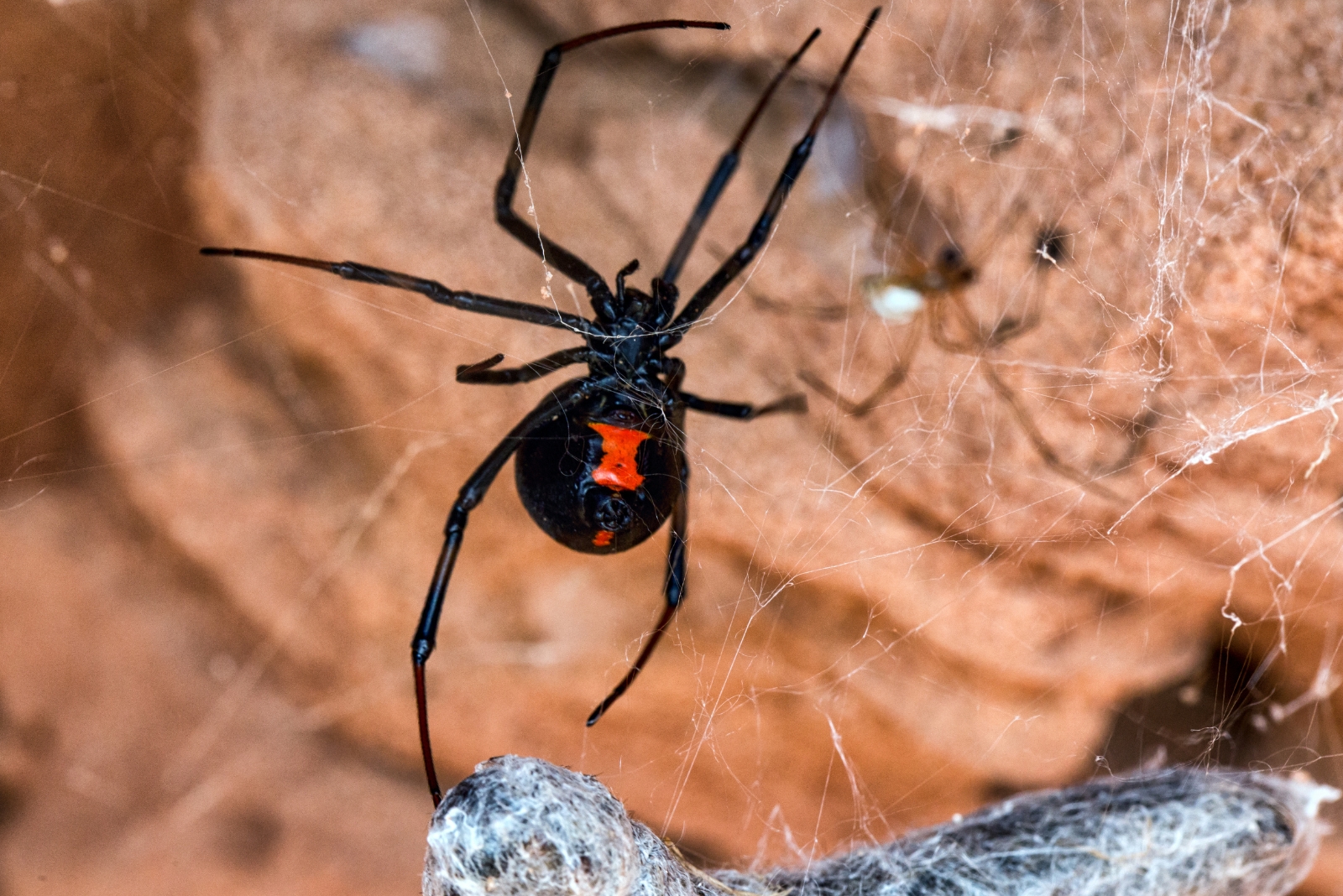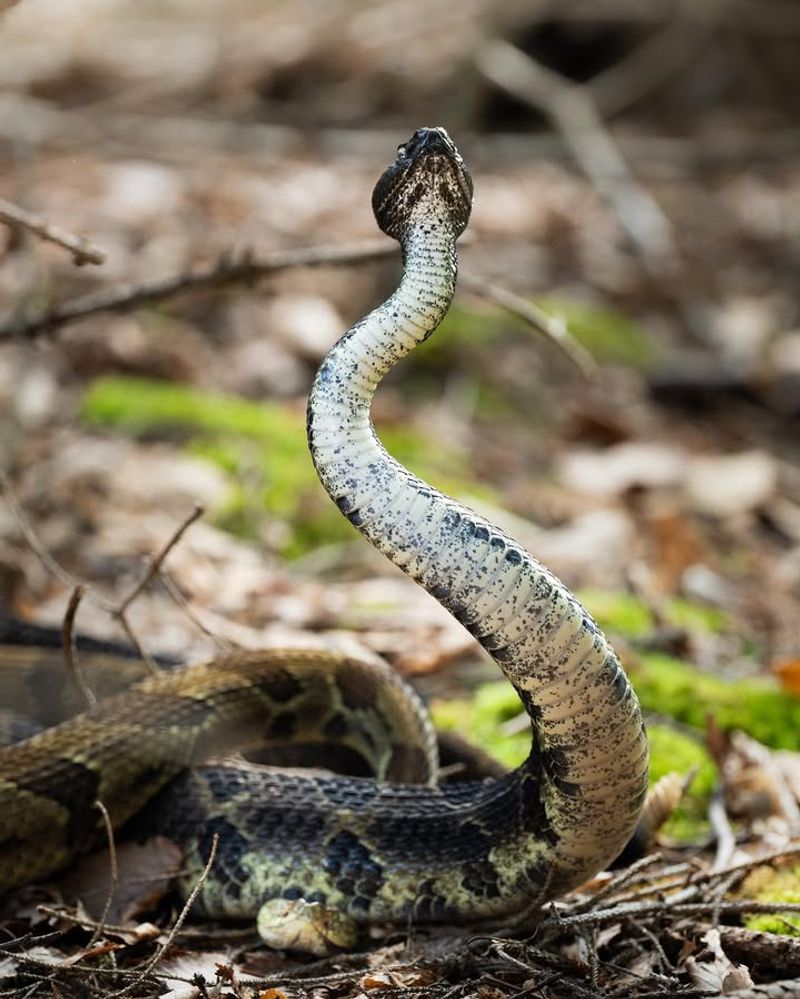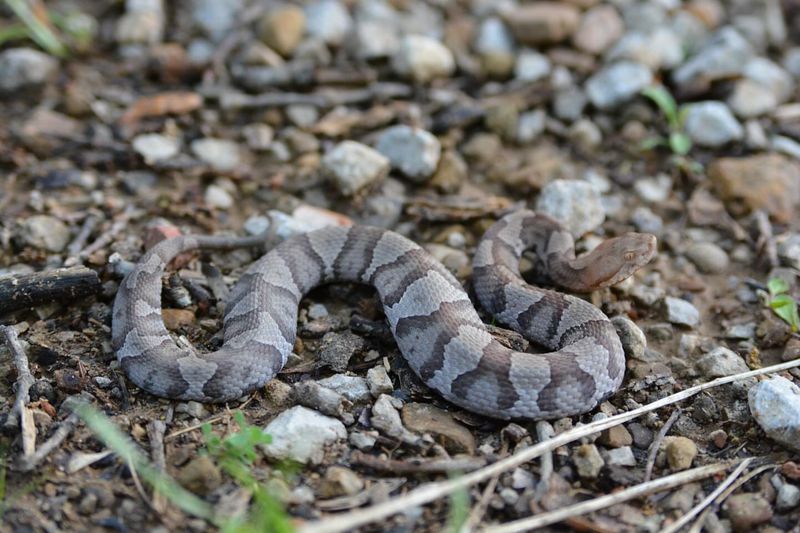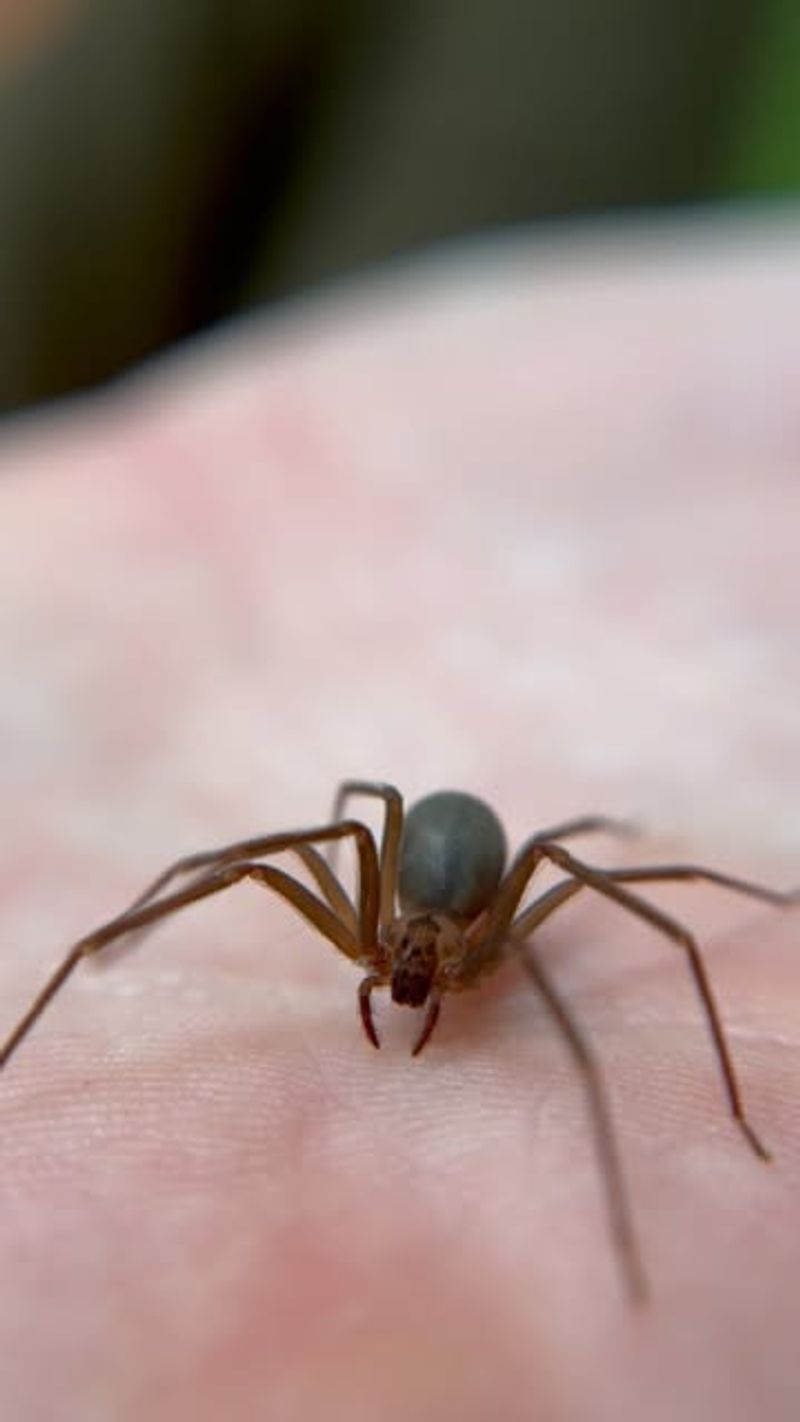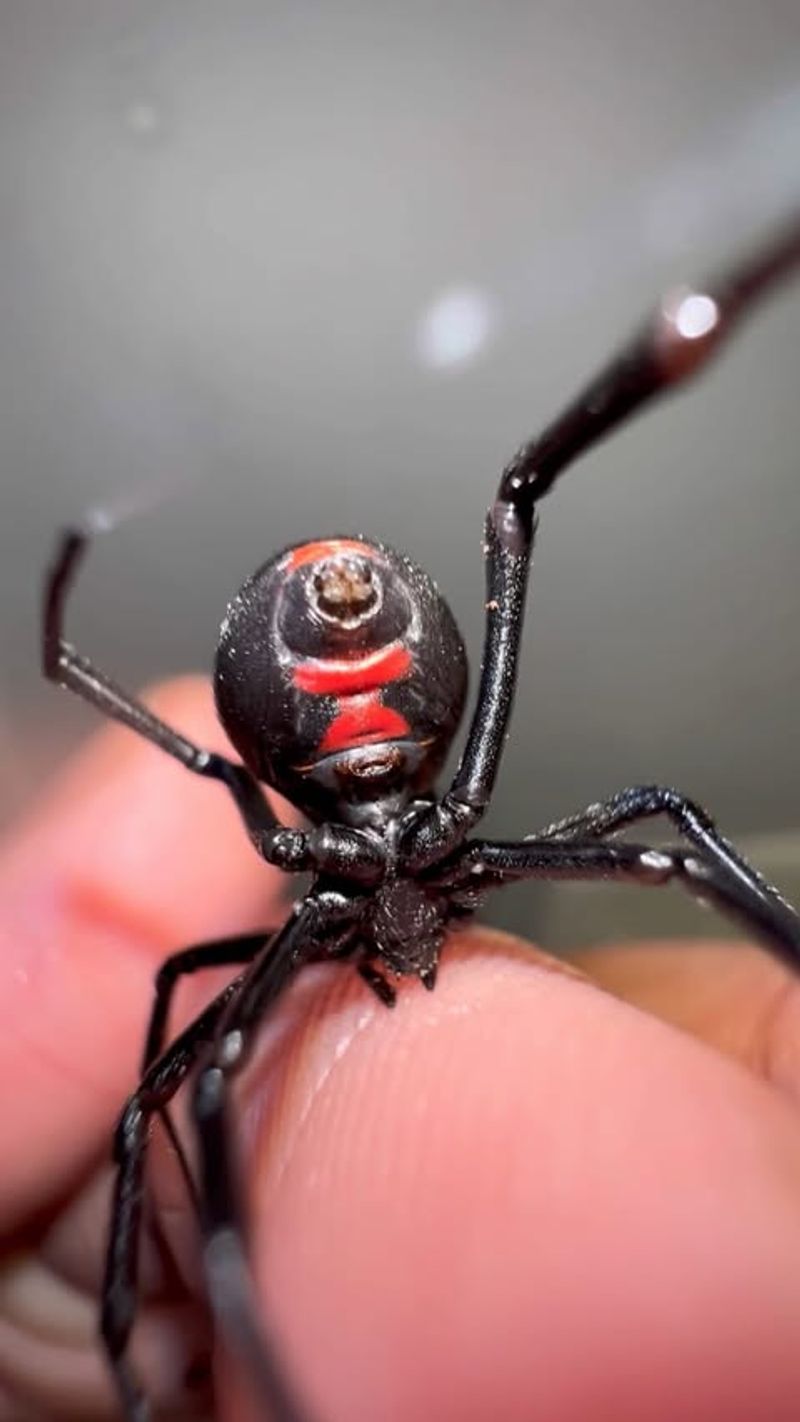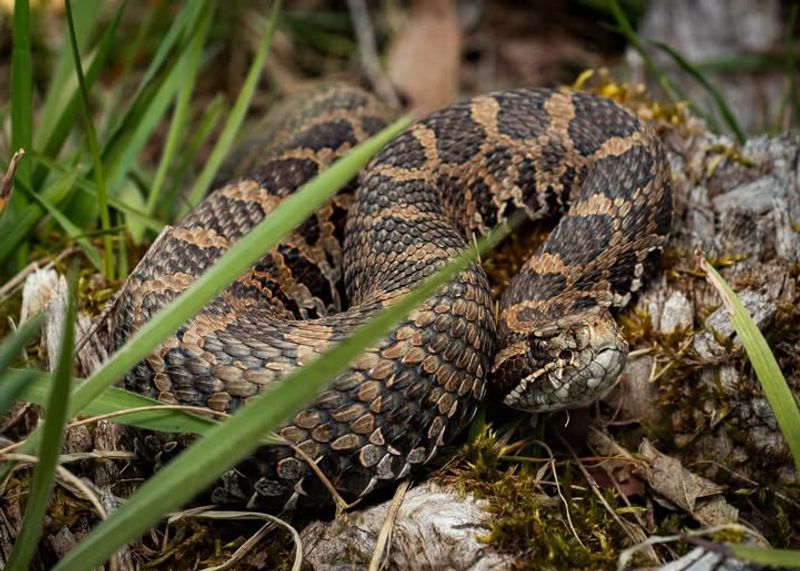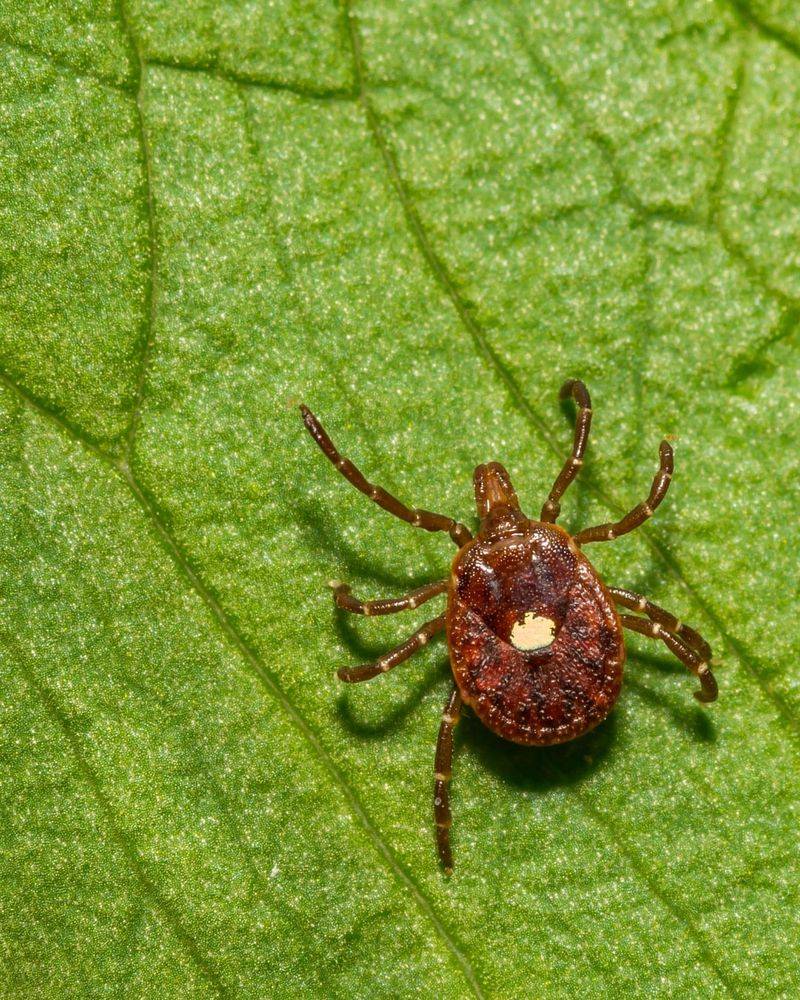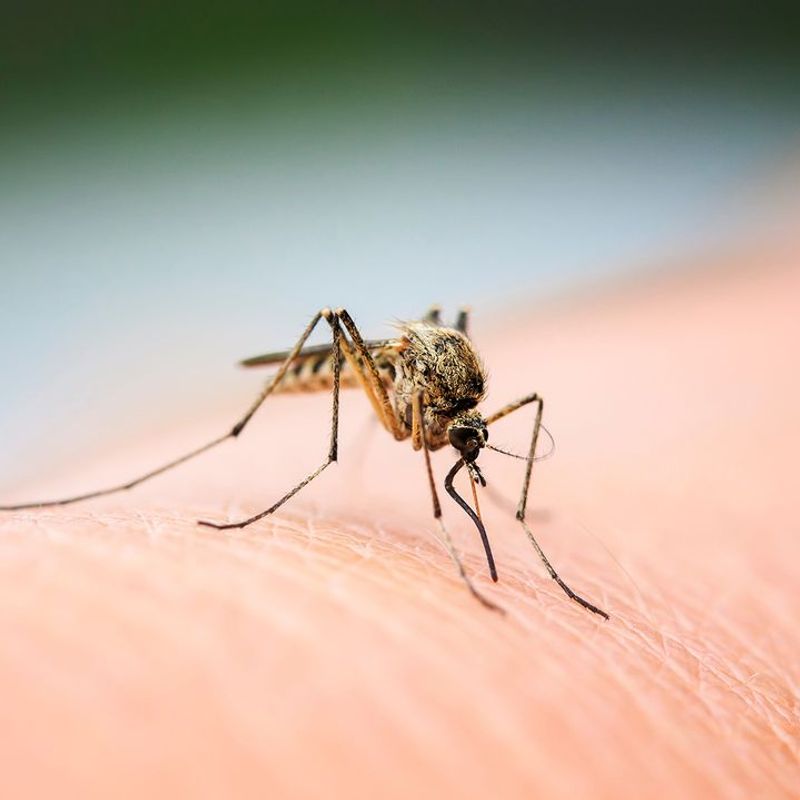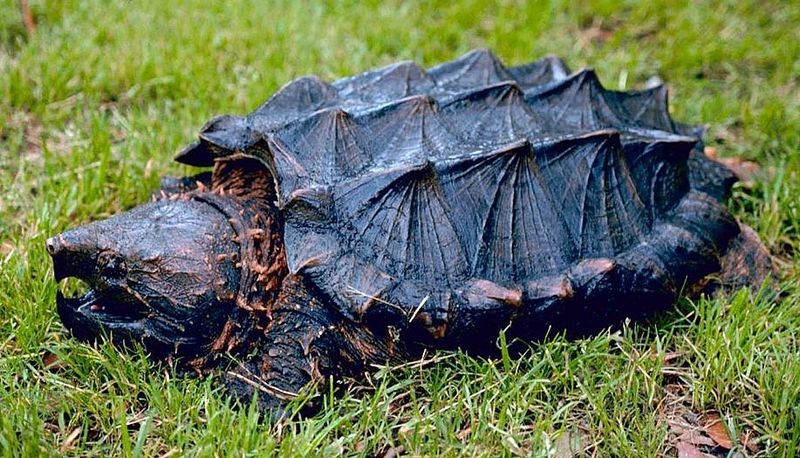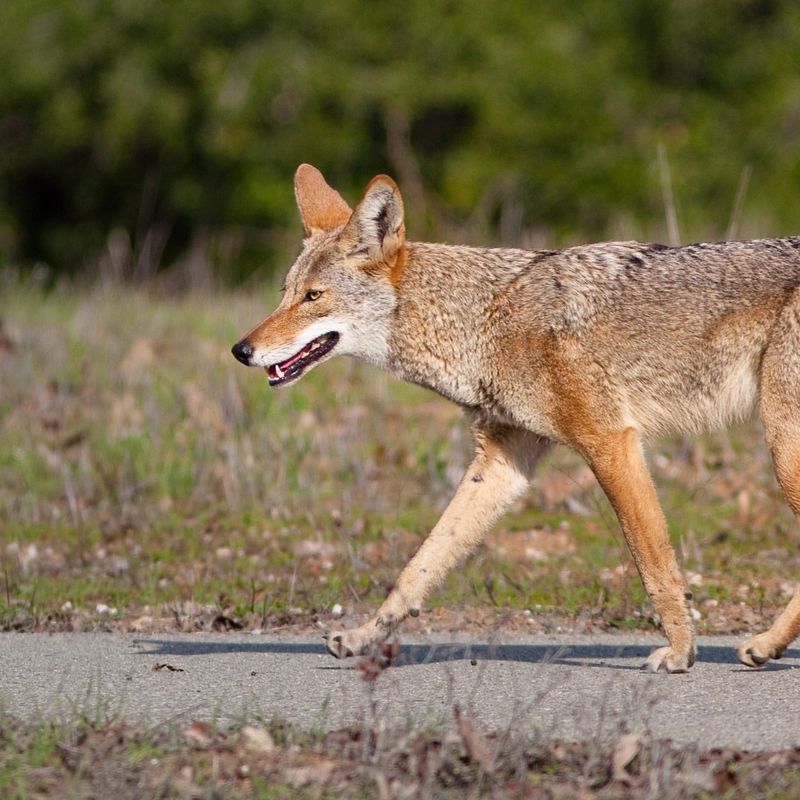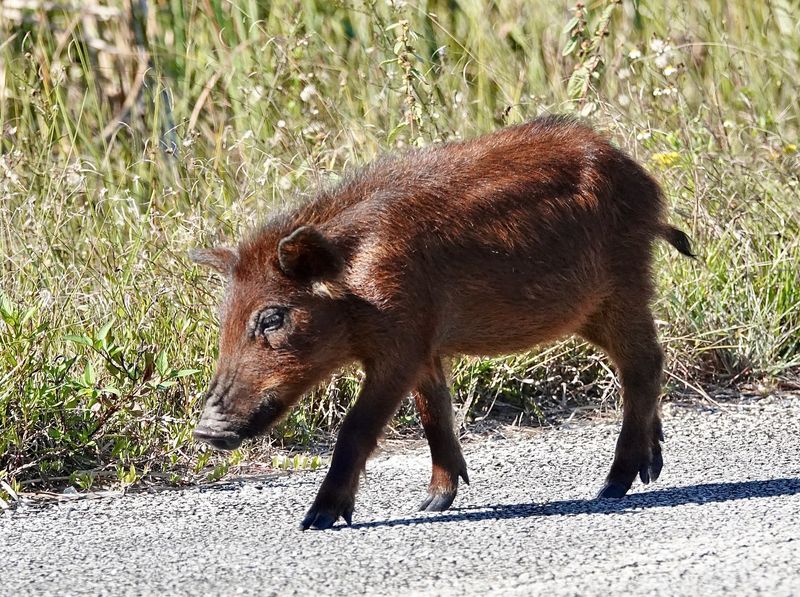Indiana’s beautiful landscapes hide a surprising array of potentially dangerous creatures. From venomous snakes to disease-carrying insects, knowing what to watch for can keep you and your family safe while enjoying the outdoors.
Learning to identify these animals and understand their behaviors is an important skill for anyone living in or visiting the Hoosier State.
1. Timber Rattlesnake: The Woodland Viper
Indiana’s largest venomous snake can grow up to 5 feet long and packs a potent bite. Their distinctive rattle warning serves as nature’s alarm system when you’ve gotten too close.
Found primarily in southern Indiana’s forested hills, these snakes prefer to avoid humans but will strike if threatened. Their venom can cause severe pain, tissue damage, and in rare cases, can be fatal if not treated promptly.
2. Northern Copperhead: The Camouflage Expert
Masters of disguise, copperheads blend perfectly with fallen leaves on forest floors. Their hourglass-shaped copper bands across a tan body make identification possible if you’re observant enough.
Unlike rattlesnakes, copperheads give no warning before striking. While rarely fatal to adults, their venom causes intense pain and tissue damage. These snakes inhabit rocky wooded hillsides in southern Indiana counties, often hiding under logs or rocks.
3. Brown Recluse Spider: The Six-Eyed Lurker
Look for the distinctive violin-shaped marking on this spider’s back—it’s earned them the nickname “fiddle-back.” Unlike most spiders with eight eyes, brown recluses have just six, arranged in three pairs.
Their venom contains an enzyme that destroys tissue, creating wounds that heal slowly and can leave scars. These spiders prefer dark, undisturbed areas like woodpiles, storage boxes, and closets, making regular cleaning important for prevention.
4. Black Widow Spider: The Red-Hourglass Bearer
Glossy black with a distinctive red hourglass marking on the underside of its abdomen, the black widow is immediately recognizable. Female black widows are the dangerous ones—males rarely bite and aren’t venomous enough to cause concern.
Their potent neurotoxic venom can cause severe muscle pain, cramping, and nausea. Found primarily in southern Indiana, these spiders prefer dark, secluded spaces like woodpiles, outbuildings, and dense vegetation where they build their messy, irregular webs.
5. Eastern Massasauga Rattlesnake: The Endangered Biter
Despite being endangered, this small rattlesnake deserves serious respect. Growing only 2-3 feet long, the massasauga has potent venom that can cause severe tissue damage.
Unlike other rattlesnakes, massasaugas prefer wetlands, marshes, and wet prairies in northern Indiana. Their small size and quiet rattle make them easy to miss until you’re too close. Conservation efforts aim to protect this rare species while educating the public about safely coexisting.
6. Ticks: The Tiny Disease Carriers
Several tick species in Indiana can transmit serious illnesses like Lyme disease and Rocky Mountain spotted fever. These parasites are most active from April through September but can feed year-round during mild winters.
After outdoor activities, perform thorough tick checks, paying special attention to warm, hidden areas like armpits, groin, and scalp. Remove attached ticks promptly with fine-tipped tweezers, grasping as close to the skin as possible and pulling straight out with steady pressure.
7. Mosquitoes: The Disease-Spreading Biters
Beyond their annoying buzz and itchy bites, Indiana mosquitoes can transmit serious illnesses like West Nile virus and various forms of encephalitis. Females are the biters, needing blood to produce eggs.
Standing water becomes a breeding ground in just days. Empty containers after rain, change birdbath water weekly, and use larvicides in ponds. Protect yourself with EPA-approved repellents containing DEET or picaridin, especially during dawn and dusk when mosquitoes are most active.
8. Snapping Turtles: The Prehistoric Biters
Common throughout Indiana’s waterways, snapping turtles have powerful jaws that can inflict serious wounds. Their necks extend surprisingly far, allowing them to reach around and bite even when picked up from behind.
Unlike painted or box turtles, snappers rarely bask on logs—they prefer murky water bottoms. When encountered on land, give them plenty of space. If relocation is necessary, use a shovel or board to scoop them up, keeping hands far from both ends.
9. Coyotes: The Adaptable Predators
Once limited to rural areas, coyotes now thrive throughout Indiana, including suburban neighborhoods. These intelligent predators rarely attack humans but may see small pets as prey.
Keep cats indoors and never leave small dogs unattended outside, especially at dawn and dusk. If approached by a coyote, make yourself look larger by raising arms and making loud noises—never run, as this triggers chase instincts. Remove food sources like pet food and unsecured garbage to discourage visits.
10. Wild Boars: The Destructive Invaders
Feral hogs are an emerging threat in southern Indiana, destroying crops and natural habitats with their aggressive rooting behavior. Adult males (boars) can weigh over 200 pounds and possess sharp tusks capable of inflicting serious injuries.
Encounters are relatively rare but dangerous if a boar feels threatened or if females are protecting piglets. If you spot one, stay calm and back away slowly—never approach. Report sightings to the Indiana DNR immediately, as they’re tracking this invasive species’ spread.

